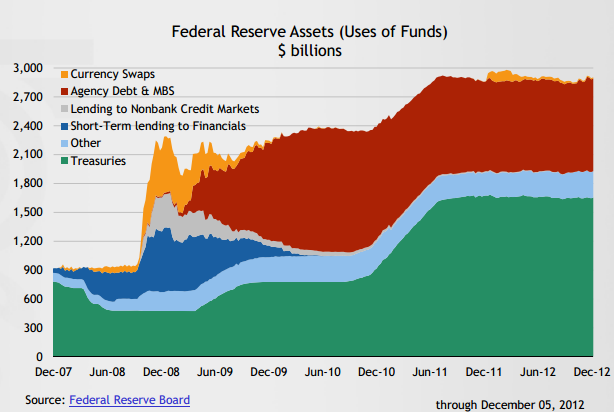During the tenth year of a massive bull market, gold is still the object of ridicule and scorn. To gold bulls this is the most reassuring sign that the bull market is alive and well.
Nowhere is this scorn so intense as with the gold numismatic market. Even the main stream analysts who recommend gold vehemently warn their clients against numismatic gold.
And with good reason. It is a market that takes considerable expertise. If you don't know what you're doing you'll get skinned - almost as badly as you will in the stock market, the futures market, and the insurance markets - not to mention the education markets, the health care market, and at your own garage.
The sad fact of modern US economic life is that where ever you rely on the advise of brokers, experts, managers, you'll get skinned. Because skinning people is viewed in modern US economic life as a sign of virility and intelligence.
There's a sucker born every minute, and if you're not out there taking advantage of them - then you're the sucker.
And that's precisely why our economic system is collapsing.
But for those with some vision and expertise the Gold Numismatic market is a vibrant treasure trove. And the winter auctions are filled with exciting offerings.
To help out, here is a short stater of the market summary of the various numismatic markets.
The market to steer clear of at all costs are those you hear about in radio and tv. Morgan dollars, state quarters, stuff just found in caches in European vaults - stuff issued by shills like the New York Mint etc etc. (there is not New York Mint - it's just a private company.)
Real numismatics are issued by the Central Mint of a particular country. And they are issued - or now exist - in true limited supply (let's say 2000 pieces or less.) And they are issued once - or at a single point in history.
Hot markets:
China. Chinese gold is still hot. However, those modern China Mint issues that are so limited do appeal to Chinese and World collectors - and they are often truly limited - however - they are issued yearly. So every year there are new limited Chinese gold issues. Every year. You figure out what that means.
Greek and Roman. Ancient Greek gold in high grade is now nearly on par with ancient Roman gold in high grade - which is to say it has become the provenance of the very wealthy. Get help when approaching these areas. There are many fakes and doctored coins. But real ones - untouched - in high grade will appreciate forever - as they are true treasures of antiquity. And very very rare. Be careful with middle to lower end items. They are still expensive, but wealthy collectors won't touch them. They'll wait patiently for high end items. Still, there are bargains if you know what you're looking for as everyone tends to chase the same things at the same time.
Byzantine. The byzantine market is byzantine. Be careful with the expensive Irene issues and "rarities" from the period. Very pricey and a large hoard has hit the market so prices will suffer over time
Medieval. Medieval gold is very very rare in high grade. Graded specimens of more common issues in high grade have been steadily moving up in price. But rarer issues are still very cheap compared to other periods - because, frankly, very little is known about the period, as there is not much contemporary writing. But be careful about grading - for example there is an MS example of a Double D'or of Philip VI in the Bowers, and they're asking $15-20,000. It has a horrible crease in the flan. Someone will get stuck with a clunker. Don't just buy the grade.
India. India is hot. British India is especially hot: mintage numbers are known and most of it has been thoroughly cataloged so you know what you're getting . Older issues are hot, but the islamic issues are the provenance of true experts because the coins have no images - only writing which is very hard to read. Ancient India is hot - but be careful. NGC won't grade it - because of authenticity concerns. A lot of this stuff is coming out, and the provenance is very sketchy. Be careful with it. Just because it appears in a major auction doesn't mean it's real.
England. Hammered gold is still very hot - at the high end. Be very careful though with graded issues. NGC is lousy with hammered gold. High end buyers care about strike and the flan - as well as state of preservation. Graders care only how shiny a coin looks. You can buy an NGC MS 65 Angel for a lot of money - and find out later that no high end collector's will touch it - because the strike is lousy. You can also buy an NGC MS 65 with a great strike and find it is worth every penny that you paid. Know what you're doing.
EUROPE. There are obviously many European gold markets - as many as there are countries - throughout history. And at the high end they're all still hot - despite the problems in Europe. High end Hammered is hot. And Europeans and English are avidly collecting Historical Medals of their countries - and certain medals have been fetching very high prices. At the recent Maison Palombo Auction in Geneva a very rare Loos medal of Louis XVI sold for $20,000 though it was only 13 grams. And at NAC a very rare Napoleonic Medal of 60 grams sold for $55,000. Another rare Napoleonic medal of 60 grams sold at Kuenker for $45,000.
South America. Rare 8 escudo pieces and patterns are always hot. Heritage has a few in January. They will bring good money. Brazil has been especially hot. Those heavy Minas Gerai gold pieces have been selling in high grade for as much as $20,000 dollars. And smaller pieces in very high grade have been going crazy. Stacks sold a 1733 12,800 Reis in MS 65 for 47,000.
 Johnson isn’t one of Chicago’s many homeless people who
seek shelter in fast-food joints. He’s a McDonald’s employee, at
both stores -- one in the Loop, the other about a mile away in
the shadow of Holy Name Cathedral.
Johnson isn’t one of Chicago’s many homeless people who
seek shelter in fast-food joints. He’s a McDonald’s employee, at
both stores -- one in the Loop, the other about a mile away in
the shadow of Holy Name Cathedral. 













 Greece Protests Turn Violent
Greece Protests Turn Violent





